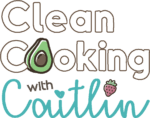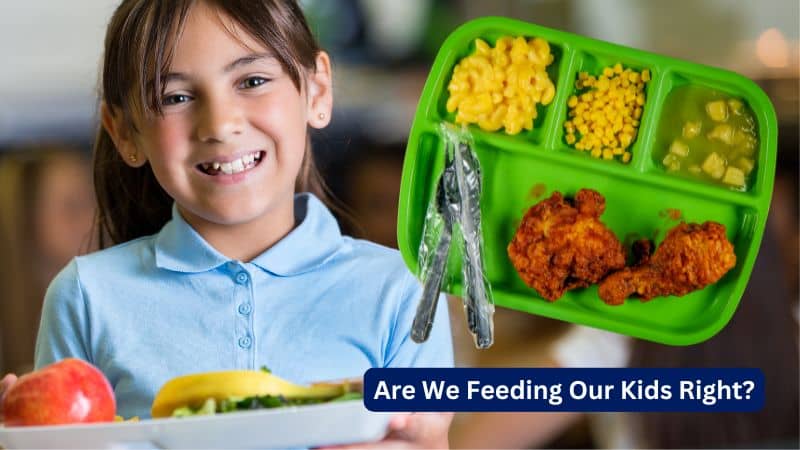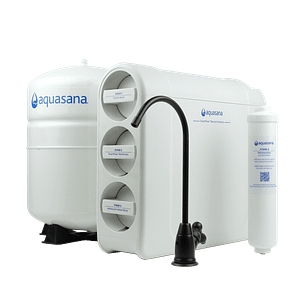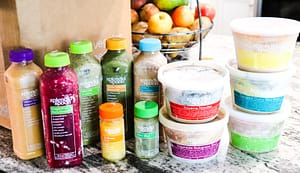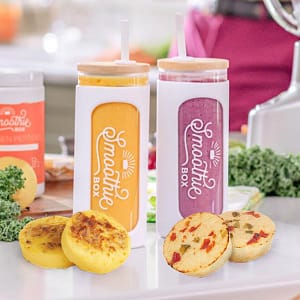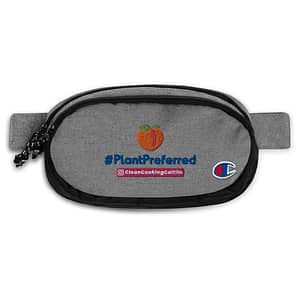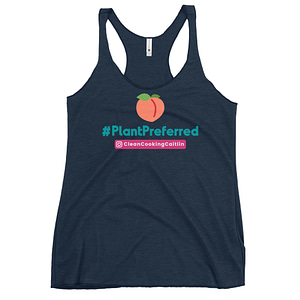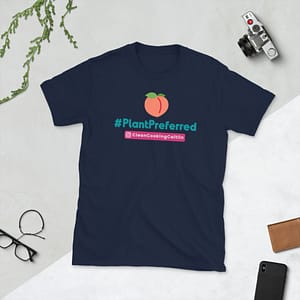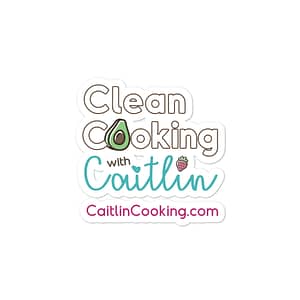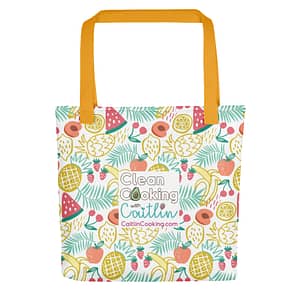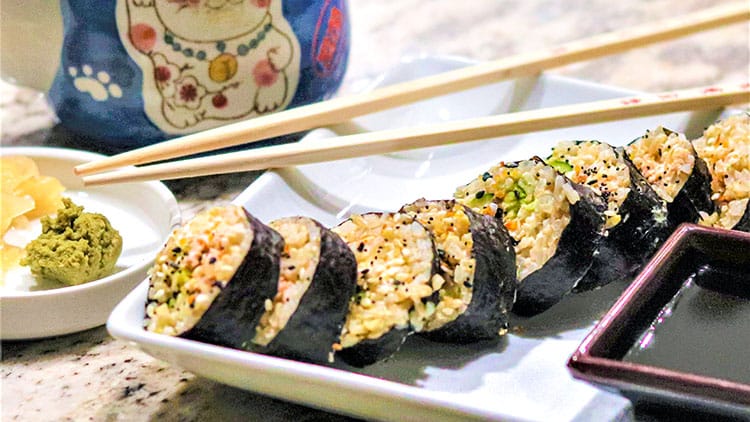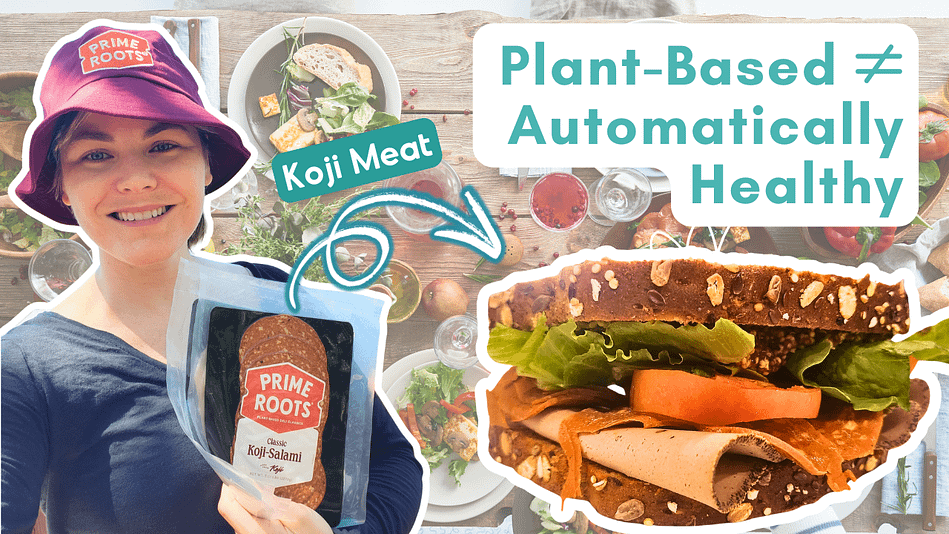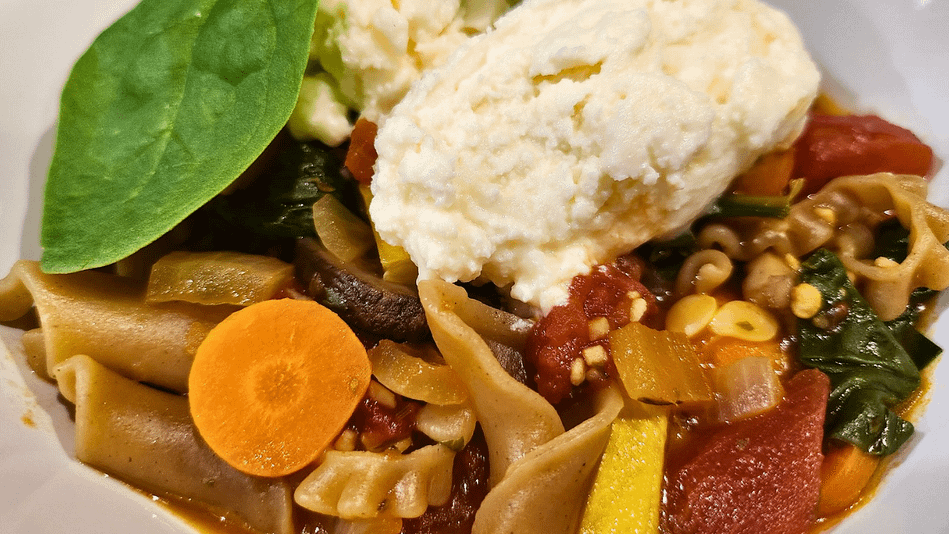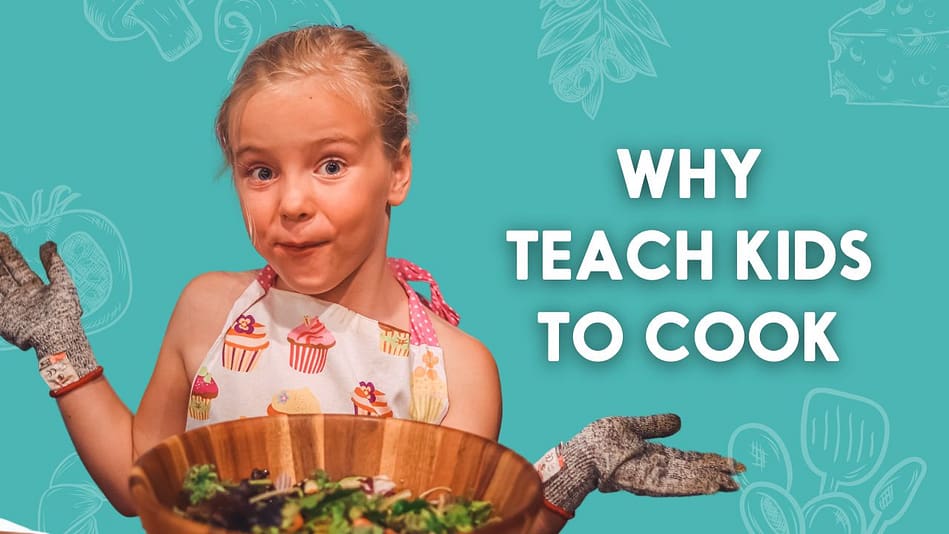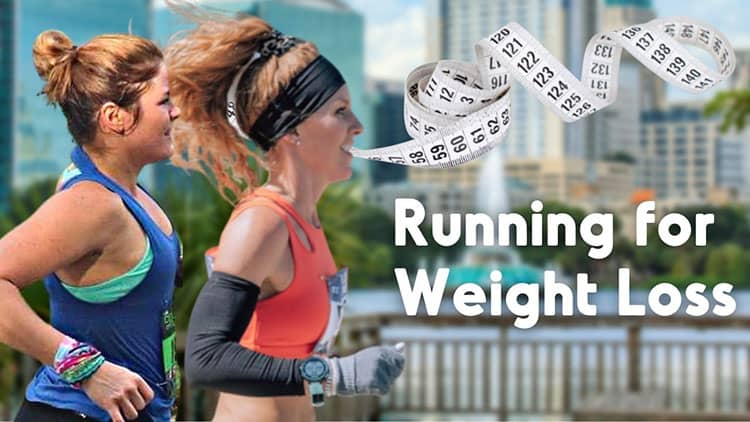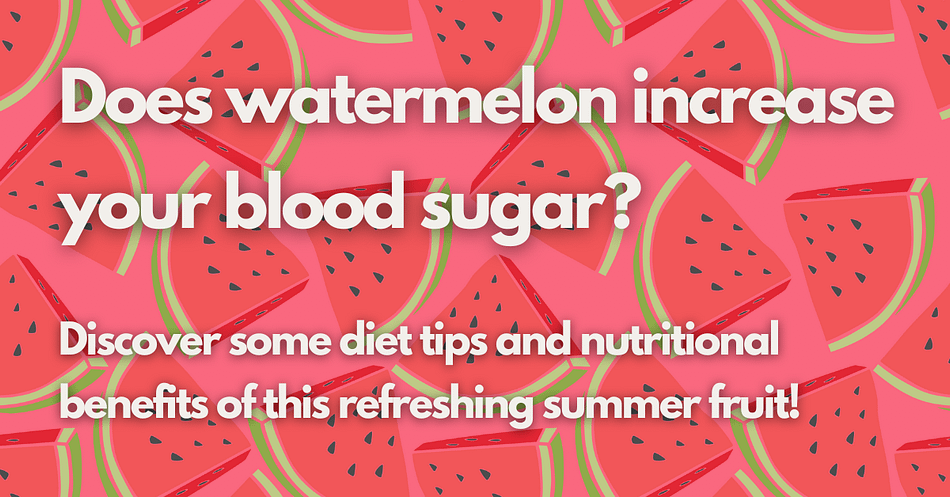Share This

Pages on this site may contain affiliate links, meaning if you book or buy something, I may earn an affiliate commission at no additional cost to you. Thank you for your support! Learn More
Also note: While I am a certified nutrition coach, I am not a medical doctor. Information here is not intended to be a replacement for the advice you should seek from your doctor.
It’s back-to-school time, and as my kids gear up for another year, I can’t help but think about what they’ll be eating for lunch. Now, I don’t want to come off as a “Karen” (if you don’t know the meme, your kids do 😂), but I believe the quality of school lunches is a serious issue. My family is far from perfect—I’ve had my share of “humorous events” involving less-than-ideal meals, which I will share later in this article—but we try our best to eat healthily. Let’s take a closer look at what’s being served in our schools and how we can do better, even with time and budget constraints.
Disclaimer: The intention of this article isn’t to shame anyone. My family is far from perfect, as you will see throughout this article. I surveyed my kids on what they eat for lunch, but I’m not sure if I got reliable answers—they don’t want to be incriminated!


The Current State of School Cafeteria Food
I recently dug into the details of elementary school lunches in Seminole County (in the Central Florida area), and what I found was both surprising and concerning. Here’s a snapshot of what’s generally on the menu, though not comprehensive (that would make for a lengthy article!):
You can find the links to download Seminole County school district nutrition information here: https://diningservices.scps.us/cms/One.aspx?portalId=614581&pageId=692554.
Breakfast
The breakfast options often include items like cereal, muffins, and breakfast bars. While convenient, many of these items are high in sugar and low in essential nutrients. For example, the banana muffin served is an Otis Spunkmeyer Banana Nut Muffin, which contains 19 grams of sugar—76% of the recommended daily intake for kids according to the American Heart Association.. The blueberry muffin served is a Sara Lee Chef Pierre Blueberry Muffin, which contains 29 grams of sugar—116% of the recommended daily intake. Curiously, Seminole County does not include the sugar count in their nutrition facts—an important detail if you ask me! While whole wheat flour is listed as the first ingredient, its benefits are marginal compared to the downside of the high sugar content.
They also offer FatCat® Scones, which sugar, fat content, and processed ingredients I fear looking up – the name says it all!
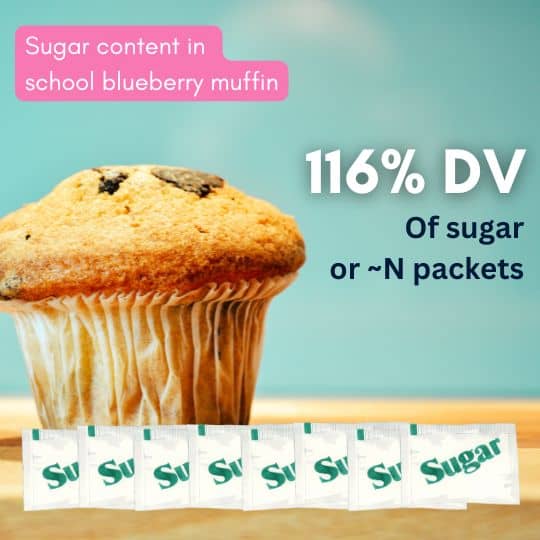

Lunch
Lunch offerings include a variety of items like chicken nuggets, pizza, and hot dogs. These meals are often accompanied by sides like chips, processed mashed potatoes and gravy, and cookies. Processed foods and unhealthy fats are prevalent, making these lunches less than ideal for growing bodies. I chose a few to review below (link to full lists are near the top). I have made the nutrient amounts that should be of concern bold. The most important thing to remember is that the sauces add lots of sugars, and these entrees should be balanced out with colorful fruits and veggies.
I suggest ensuring kids have colorful fruits & veggies on the side and skip sauces besides mustard.
Entrees
| Item | Calories | Saturated Fat Content | Sugar Content | Sodium Content | Nutrition Content |
| Chicken Nuggets, Breaded (Rich Chicks®) – without dipping sauces | 178 | 2g | 0g | 358mg | Rich in protein, and 8% DV iron; however, lacking in other nutrients. |
| Chicken, Orange (Yang’s®) | 340 | 3g | 12g | 480mg | Protein is high, but nutrients are very low. |
| Burger, Hamburger, 100% All Beef * – without sauces, though they seem to be included by default | 340 | 6.5g | 0g | 345mg | High in protein, 6% DV iron, 7% DV Fiber in the bun (higher than most). Nothing that compensates for fat content. |
| Uncrustables, Strawberry (Smucker’s®) | 210 | 2g | 10g | 220mg | Low in all beneficial nutrients. |
Sauces
| Item | Calories | Saturated Fat Content | Sugar Content | Sodium Content | Nutrition Content |
| ONE Ketchup (KraftHeinz®) packet | 20 | 0g | 4g | 180mg | No beneficial nutrition. |
| ONE BBQ Sauce (Taste Pleasers ®) | 40 | 0g | 7g | 230mg | No beneficial nutrition. |
| ONE Honey Mustard (KraftHeinz®) | 80 | 1g | 7g | 250mg | No beneficial nutrition. |
| ONE Mayonnaise (KraftHeinz®) packet | 90 | 1.5g | 0g | 65mg | No beneficial nutrition. |
Sides – the ones in italics are for an additional cost (claims my children)
At this point, my kids really don’t want to tell me the truth, though I told them I’m being unbiased as much as possible! My son just told me he “forgets” what sides he gets for lunch.
| Item | Calories | Saturated Fat Content | Sugar Content | Sodium Content | Nutrition Content |
| Beans, vegetarian (Furmano’s®) with BBQ Sauce (Sweet Baby Ray’s®) | 210 | 0g | 24g* | 720mg | This contains a good amount of fiber and protein. |
| Breadstick, Garlic (Bake Crafters®) | 100 | .5g | <1g | 95mg | Low nutritional value, and less than 1g of fiber. |
| Mashed Potatoes, Original Butter (Basic American®) and Gravy Chicken Mix (Monarch®) | 125 | 1g | 5g | 690mg | The gravy contains no beneficial nutrients. There are some trace nutrients in the mashed potatoes – namely, 8% DV Potassium. |
| Fruit, Mixed (Monarch®) | 70 | 0g | 16mg | 19mg | High in Vitamin C. |
| Apple Juice Carton (Juicy Juice®) | 110 | 0g | 27mg | 15mg | High in Potassium and Vitamin C (though fortified). NO fiber, which makes this a poor option. |
| Milk, Chocolate Fat-Free (TG Lee®) | 140 | 2g | 23mg | 250mg | A decent amount of calcium, vitamin A, and Potassium. |
| Vegetables (diced carrots, corn, green beans, and peas), Mixed with Butter Cooking Spray (Vegalene®) | very low | very low | very low | very low | This is one of the best options. Various nutrients in the vegetables (more so if they are frozen vs. canned). Note that most of the vegetables are high starch. |
| Home Fries: Russet Potatoes; Butter, unsalted (Glenview Farms®), Salt, Butter Cooking Spray (Vegalene®) | Depends | Depends on amount of butter. 1 serving of butter is 7g – likely half as much per serving. | <1g | Depends on amount of salt used | Russet potatoes themselves are actually fairly high in nutrients (though their colored varieties are preferable). It’s what we add to fries that make them a less than ideal choice. Per serving, Russet potatoes have 37% DV Vitamin C, 31% DV Vitamin B6, 27% Potassium and 20% Manganese. |
| Chips, Oven Baked Lay’s BBQ Potato Crisps (Frito Lay®) | 120 | .5 | 3g | 140g | Little to no beneficial nutrients. |
Ice Cream and Sugary Treats
I will be a “Karen” all day on this topic. Ice-cream, cookies, and sugary drinks have no place in our kids cafeteria’s except for maybe special occasions. It makes me furious that our kids are allowed to use their lunch accounts, that we load, to buy ice cream daily without our consent! And to remedy that you have to call the cafeteria and put a block on it. I can’t see any other reason for this except unethically fundraising. Can you?
Harmful Ingredients
In examining the provided list of ingredients for breakfast and lunch items at elementary schools, several ingredients are particularly concerning due to their potential health impacts. Here are the most harmful ingredients and why they are concerning:
-
High Fructose Corn Syrup (HFCS)
Found in: Jelly, Grape (Smucker’s®); Syrup, Cup (KraftHeinz®); various ice cream products.
Why Concerning: HFCS is linked to obesity, diabetes, and other metabolic disorders. It is a highly processed form of sugar that can contribute to excessive calorie intake and poor health outcomes. -
Hydrogenated Oils (Trans Fats)
Found in: Uncrustables, Grape (Smucker’s®); Uncrustables, Strawberry (Smucker’s®).
Why Concerning: Hydrogenated oils contain trans fats, which are associated with increased risk of heart disease, inflammation, and bad cholesterol levels. -
Artificial Colors and Flavors
Found in: Froot Loops (Red 40, Yellow 5, Blue 1); Ice Cream Bar, Strawberry Scooter Crunch (Red 40, Blue 1); various other ice cream products.
Why Concerning: Artificial colors and flavors can cause hyperactivity in children and may be linked to other health issues such as allergies and behavioral problems. -
Monosodium Glutamate (MSG)
Found in: Chips, Reduced Fat Doritos, Cool Ranch; Gravy Chicken Mix (Monarch®).
Why Concerning: MSG is a flavor enhancer that can cause headaches, nausea, and other symptoms in sensitive individuals. Long-term consumption may have more serious health effects. -
Sodium Aluminum Phosphate and Other Aluminum Compounds
Found in: Biscuit, Whole Grain (Rich’s®); Pancake, Maple Mini (Bake Crafters®); various breaded chicken products.
Why Concerning: Aluminum compounds have been linked to neurological disorders, including Alzheimer’s disease. -
Potassium Sorbate and Sodium Benzoate (Preservatives)
Found in: Sauce, Honey Mustard, Dip Cup (KraftHeinz®); various syrups and sauces.
Why Concerning: These preservatives can cause allergic reactions and may have harmful effects on human DNA. -
Soy Protein Concentrate and Isolated Soy Protein
Found in: Chicken Nuggets (Rich Chicks®); Chicken Tender (Rich Chicks®); Vegetarian Chick’n Patty (Rebellyous®).
Why Concerning: Highly processed soy products can disrupt hormonal balance and are often genetically modified. -
Artificial Sweeteners
Found in: Some flavored yogurts and other sweetened products.
Why Concerning: Artificial sweeteners can affect metabolism and increase cravings for sweet foods, potentially leading to weight gain and metabolic issues.
Anatomy of Seminole County School Lunch
Below is what the elementary school “requires” (I’m not sure if this is [forced]). I am happy that they are required to choose a fruit or veggie with their lunch; however, it clearly states that fruit juice is “counted” as a fruit. When the fiber is removed from a fruit to make a juice, their is nothing to slow the absorption of the abundance of sugar and fill up our kids bellies. Juice should not be counted as a fruit in any circumstance!
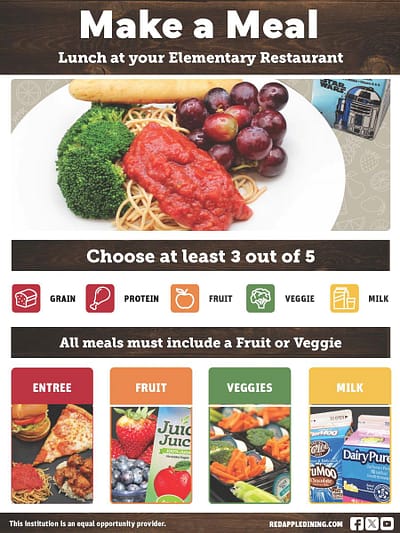

Do your school lunches look like this? Join in the conversation!
Takeaway
School Lunch is Mostly Highly Processed
Sodium
For taste and preservation, shelf-stable and processed foods are loaded with salt. Contrary to what you might think, kids should watch their salt intake too – not just adults with high blood pressure! Salt is necessary in small amounts but with our diets consisting of a substantial portion of processed foods, the daily suggested salt consumption for kids is easily surpassed. Excess sodium can lead to chronic health issues such as high blood pressure, which is increasingly being observed in children and can result in long-term health problems like heart disease and stroke due to the imbalance it creates in their bodies (Home) (professional.heart.org).
Daily recommended sodium intake guidelines for children and adolescents according to Mayoclinic are as follows:
- Ages 1–3 — Less than 1,200 milligrams
- Ages 4–8 — Less than 1,500 milligrams
- Ages 9–13 — Less than 1,800 milligrams
- Ages 14–18 — 2,300 milligrams
Harmful Ingredients
School meals often contain concerning ingredients like High Fructose Corn Syrup (HFCS), which is linked to obesity and diabetes, and hydrogenated oils, which contain trans fats that raise the risk of heart disease. Artificial colors and flavors, such as those in Froot Loops, can cause hyperactivity and other health issues in children. Additionally, preservatives like potassium sorbate and sodium benzoate can trigger allergic reactions and damage DNA. These are just a few examples of harmful components found in school meals; for a complete list, see the table provided.
Even though none of the items report trans fat in their foods, many contain hydrogenized oils. For example, Grape Uncrustables and Strawberry Uncrustables (Smucker’s®) and Fortune Cookies (Asian Food Solutions®) include hydrogenized oils, which can still equate to small amounts of trans fat.
“Healthy” and “Unhealthy” Options
“Healthy” and “Unhealthy” are in quotes here because truly all foods are on a spectrum and it isn’t so black and white.
There are some healthy options like the Hummus Box, which, despite some processed ingredients, offers nutritional benefits. Unsweetened apple sauce or apple slices, mixed veggies, and all beans (except baked beans) are also good choices. Green beans, chef salad, and items like mozzarella cheese sticks, diced chicken, and grilled chicken strips are closer to natural options. Even some less healthy options aren’t the worst if balanced with nutritious sides.
On the flip side, there are many tempting unhealthy options like pizza, hot dogs, chips, ice cream, and cookies. Burgers and nuggets often come with sugary sauces and lack nutritious balance. Processed bakery items, Rice Krispie Treats, and bread and cheese-only options like quesadillas or grilled cheese are also common.
We just found out that my step son has been trading his home lunch for junk food from the cafeteria. It’s hard to stop kids from sneaking these foods, since they are engineered to be hyper-palatable (thus addicting). My takeaway is that I need to help them bring more variety to lunch.
Many Tempting Sugary Treats are Offered
Schools frequently offer tempting sugary treats such as ice cream, cookies, and sugary drinks, which can negatively impact children’s health. These high-sugar items contribute to excessive calorie intake, poor dental health, and an increased risk of obesity and metabolic disorders. Additionally, they often lack essential nutrients, displacing healthier food options in children’s diets. Many items, such as cereals, max their sugar content at around 10 grams per serving, but it’s important to remember that kids often consume more than the standard serving size. For example, it’s not just a 3/4 cup of cereal or a single packet of ketchup—kids typically use multiple packets of ketchup, which can equal the sugar in a cookie!
When my son was in elementary school, I discovered he was buying ice cream every day without my permission. I was appalled that this was even allowed by default, and that I had to call the cafeteria to stop it! Simply telling a young child, especially one with ADHD, not to eat the ice cream doesn’t work.
Fast forward to last year, and my stepdaughter was doing the same thing. This time, we didn’t call the cafeteria right away. Instead, we periodically checked her account. To our shock, we found out she had accumulated over $100 in debt to the school. Not only was she frequently buying ice cream, but she was also purchasing a second lunch in addition to the one she brought from home!
While I understand the school’s policy of feeding any child who wants to buy lunch (assuming some kids may be deprived), there is no excuse for allowing daily ice cream purchases. Despite repeated attempts to address this with the cafeteria, they continued to let her buy a second lunch. Her teacher, worried she was “starving,” even suggested she add extra cheese to her sandwich (which we don’t condone). We assured the teacher that our daughter is not starving (it’s pretty obvious)—she just enjoys eating. We remain frustrated with the cafeteria while continuing to counsel our daughter on making healthier choices.
Soybean, Canola, Corn, and Palm Oil Use
In moderation, these oils can be healthy as they contain beneficial nutrients like omega-3 fatty acids, plant sterols, and vitamins A and E, and have properties like low saturated fat and high smoke points. However, they are often highly processed and high in omega-6 fatty acids, which, when out of balance with omega-3s, can contribute to inflammation and raise LDL cholesterol, increasing the risk of heart disease.
Nutrition Density is Lacking
Many school meals lack nutrition density, meaning they provide more calories than beneficial nutrients. While it’s important not to focus solely on calorie count, it’s crucial to consider the balance of nutrition relative to those calories. Items like chicken nuggets and pizza are calorie-dense but often low in essential vitamins and minerals, leading to a diet that might be high in energy but low in nutritional value. Additionally, kids often pile their plates high, leading to significant food waste when their eyes are bigger than their stomachs. Emphasizing nutrient-rich foods can help ensure children get the necessary nutrients without unnecessary calorie intake.
What Can We Do?
Navigating the challenges of school lunches can be tricky, especially with issues like the economy, child hunger, obesity, bad role modeling, and limited control over what kids eat at school. In our fast-paced society, many parents struggle with time constraints, limited access to healthy foods, and dealing with poor food policies influenced by powerful corporations. Here are some steps we can take to improve school lunches and promote better nutrition for our kids:
Make Healthy Meals at Home
Preparing balanced meals at home can ensure your kids get the nutrition they need. Focus on whole foods like fruits, vegetables, lean proteins, and whole grains. Example: Instead of store-bought chicken nuggets, make homemade chicken tenders using whole grain breadcrumbs and baking them.
Make Healthy Meals at Home
Preparing balanced meals at home can ensure your kids get the nutrition they need. Focus on whole foods like fruits, vegetables, lean proteins, and whole grains. Example: Instead of store-bought chicken nuggets, make homemade chicken tenders using whole grain breadcrumbs and baking them.
Send Kids with Healthy Leftovers
Packing leftovers from a healthy dinner can be a great way to control what your kids eat at school. Providing alternatives to their favorite meals can help prevent the temptation to buy, trade, or trash their lunches. Example: Send a thermos of homemade vegetable soup or a whole grain pasta salad with fresh veggies. Make healthy versions of their favorite meals like a turkey and cheese wrap or a homemade pizza with whole grain crust.
Monitor School Lunch Purchases
Keep an eye on what your kids are buying at school. Many schools allow parents to track their child’s lunch purchases online. Example: Some school systems have apps or websites where you can see what your child buys and even set restrictions on certain items.
Communicate with the School
Speak with your child’s school cafeteria staff to request healthier options and put restrictions on unhealthy treats. Example: Ask the school to limit your child’s access to ice cream and sugary snacks.
Advocate for Policy Changes
On a larger scale, advocating for policy changes that prioritize healthier school meals is crucial. Here are some actions to consider:
Support Better Funding for School Meal Programs
Increased funding can help schools provide higher-quality, nutritious meals. Example: Write to your local representatives advocating for better funding and support for school meal programs.
Push for Stricter Nutritional Guidelines
Advocate for policies that enforce stricter nutritional standards in school cafeterias. Example: Join parent-teacher associations or school boards to push for the adoption of healthier meal standards.
Promote Universal Free School Meals
Universal free school meals can reduce food insecurity and ensure all students have access to nutritious meals. Democratic Vice President candidate Tim Walz has been a strong advocate for universal free school meals. While the initiative offers numerous benefits, including improved access to nutritious food for all students and reduced food insecurity, I’m concerned that the quality of school lunches might decline due to “funding constraints and logistical challenges.” Given Walz’s background working on a family farm, it is hoped that he understands the importance of maintaining nutrition standards. Balancing the goal of feeding all children with the need to address the ongoing childhood obesity epidemic is crucial. For more details, refer to the full article here.
Combatting Key Issues
Economic Constraints
Look for budget-friendly healthy options like seasonal fruits and vegetables, bulk grains, and lean meats. Meal prepping and planning can also help save time and money.
Child Hunger and Obesity
Encourage balanced meals and snacks, and educate kids about portion control and the importance of variety in their diet.
Role Modeling
Be a good role model by eating healthy yourself. Kids are more likely to follow suit if they see you making nutritious choices.
Time Constraints
Utilize quick and healthy meal prep ideas. Prepare ingredients over the weekend for easy assembly during the week. Slow cookers and instant pots can also be time-savers.
Access to Healthy Food
Advocate for local initiatives to increase access to fresh produce and healthy foods. Support farmers’ markets and community gardens.
By making these changes and advocating for better policies, we can help ensure that our children receive the nutritious meals they need to thrive both in and out of school.
Practical Suggestions for Improving School Lunches
Increase Whole Foods
Incorporate more fruits, vegetables, whole grains, and lean proteins into school meals. Example: Offer apple slices instead of fries or whole grain bread instead of white.
Limit Processed Foods
Reduce the availability of heavily processed foods and replace them with healthier alternatives. Example: Substitute chicken nuggets with grilled chicken strips.
Promote Healthy Snacks
Encourage the consumption of healthier snacks like nuts, seeds, yogurt, and fresh fruit. Example: Replace sugary snacks with options like baby carrots with hummus or a handful of almonds.
Education and Involvement
Educate kids and parents about nutrition and involve them in meal planning. Example: Schools can host workshops or send out newsletters with healthy recipes and tips.
If you would like some specific school lunch ideas & recipes, let me know in the comments.
Then sign up for my newsletter so you don’t miss future articles!
Reflecting on Our Journey
In my own family, we’ve had our fair share of kitchen mishaps and less-than-perfect meals. Managing a large family of kids, each craving their own independence, is no easy task. Just the other day, as I began writing this, my son walked in from a Dollar General trip, proudly toting a Coca-Cola with a tropical umbrella 😒. It was a stark reminder that I, too, need to do better.
The journey to healthier eating is about doing what you can and taking small steps at a time. It will take a while for society to change, and it may take a while for us to change, but as long as we have the intention and are taking action, progress will come. Perhaps our grandkids will have a healthier upbringing, though I certainly hope my own children see that day!
As we send our kids back to school, let’s make a collective effort to improve what they’re eating. With small, consistent changes, we can ensure our kids are getting the nutrition they need to grow and thrive. After all, a healthy diet is a cornerstone of a healthy life. Together, we can make a difference for the future health of our children.
❤️❤️ Don’t miss a post! Make sure you remember to sign up for my Newsletter and follow me on social ❤️❤️!
Some Related Articles to Read
- Snack Attack: Crafting Delicious, Nutrient-Packed Healthy Snacks for Kids and Adults on the Go!
- Plant-Based Diet for Kids: My 5 Tips to Get Your Kids to Eat Plant-Based Meals!
